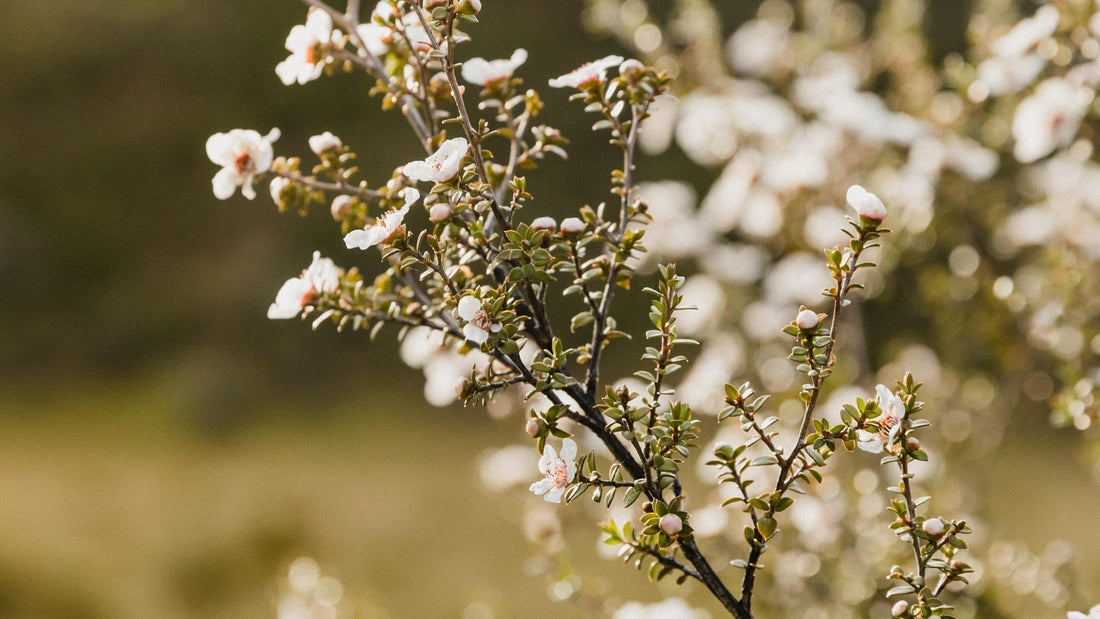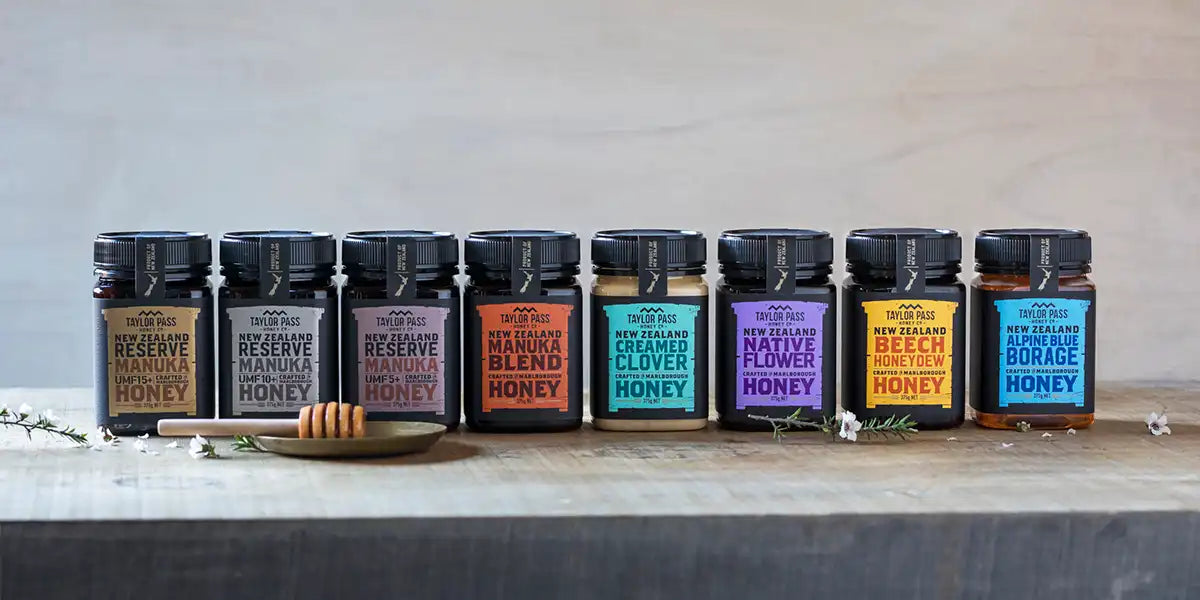How the World Discovered Mānuka Honey's Healing Powers
Deep within New Zealand's wild territories, a remarkable treasure is harvested each year - one that has transformed from a local remedy into a global wellness sensation. Mānuka honey, with its complex flavor profile and distinctive rich amber hue, is captivating health practitioners worldwide. But this unique honey is more than just the latest ‘superfood’ - it carries centuries of indigenous wisdom and groundbreaking scientific validation.
Ancient Wisdom
Long before Mānuka honey graced the shelves of premium grocers or became a staple in celebrity wellness routines, New Zealand’s indigenous people recognized its extraordinary properties. For centuries, Māori used every part of this versatile shrub. The sturdy red wood from the Mānuka trunk was crafted into tools, the bark was fashioned into water containers and waterproof roofing - and the plant was also highly regarded for its healing qualities and used to treat burns and infections. At the same time, steam from boiled Mānuka leaves was known to relieve respiratory conditions.
European Discovery
When European sailors first encountered New Zealand's shores, they soon recognized the Mānuka plant's extraordinary potential. British Explorer Captain James Cook and his crew, facing the constant threat of scurvy during long voyages, discovered that Mānuka leaves could be brewed into a revitalizing tea. This practice, almost certainly learned from observing Māori traditions, introduced the plant to Western understanding and the vitamin C-rich infusion became a welcome addition to maritime stores.
The Scientific Breakthrough
While indigenous knowledge and early European use laid the groundwork, Mānuka honey's journey to international acclaim accelerated in the 1980s through the dedicated research of Dr. Peter Molan, a biochemist at New Zealand's University of Waikato.
Dr. Molan's curiosity led him to investigate something traditional healers had observed for generations - Mānuka honey seemed to possess exceptional healing properties compared to other varieties. His laboratory studies confirmed what indigenous wisdom had long suggested: Mānuka honey contained remarkable antibacterial capabilities that distinguished it from all other honey types.
The revolutionary discovery was that, unlike common honey varieties whose antibacterial properties come from hydrogen peroxide content, Mānuka honey contained an additional, stable antibacterial component. This unique property, eventually identified as methylglyoxal (MGO).
This scientific validation transformed Mānuka honey from a local natural remedy into a product with verified therapeutic applications. Dr. Molan's work led to the development of the Unique Mānuka Factor (UMF) grading system, providing consumers a reliable measure of the honey's potency and medicinal value.
Modern Applications: Why The World Is Turning To Mānuka Honey
Today, Mānuka honey has found its way into medicine cabinets, kitchen pantries, and skincare routines all over the world, for good reason. Its applications range from supporting natural immunity to enhancing skin health:
• Wound Care: FDA-approved Mānuka honey dressings are now used in medical settings for managing difficult-to-heal wounds, burns, and surgical sites.
• Digestive Health: Many consumers report relief from digestive discomfort when incorporating small amounts of high-grade Mānuka honey into their daily routine.
• Oral Health: Research suggests Mānuka may help reduce oral bacteria associated with gum disease and tooth decay.
• Cough and Cold Relief: The smooth texture, immunity supporting and anti-inflammatory characteristics of Mānuka honey make it helpful for soothing sore throats and coughs.
• Skincare: The natural antibacterial and moisturizing properties have made Mānuka a valued ingredient in natural skincare products, addressing everything from acne to eczema.
The Authentic Mānuka Honey Experience
With popularity comes the challenge of authenticity. As demand increases, so too have concerns about diluted or counterfeit products. Genuine Mānuka honey has a distinctively rich flavor profile with notes of caramel and herbs - a sensory experience that reflects its unique composition and origin. For wellness-conscious consumers, understanding certification standards like UMF™ or MGO has become essential to ensuring they receive the genuine article with its full spectrum of benefits.
From Indigenous Wisdom to Global Phenomenon
The story of Mānuka honey represents a convergence of traditional knowledge and modern science. What began as localized wisdom has evolved through scientific validation into a globally recognized natural health product that continues to surprise researchers with its therapeutic potential.
As the desire for evidence-based natural remedies with authentic origins increases, Mānuka honey stands as a powerful (and delicious) example of the value of traditional knowledge when confirmed through rigorous scientific inquiry.
For those navigating the often-confusing world of wellness trends, Mānuka honey offers something increasingly rare: a natural remedy with centuries of traditional use, backed by decades of scientific research, delivering tangible benefits that support its remarkable journey from New Zealand's wild, verdant landscapes to the world stage.
Find your nearest Taylor Pass Honey Co store here and keep up with the latest news, inspiration and research on our social media.


